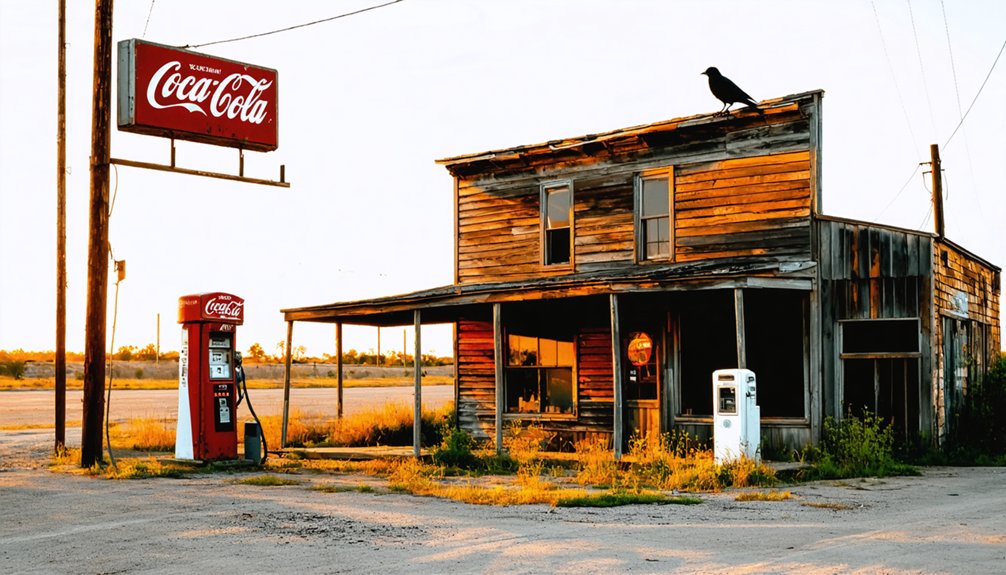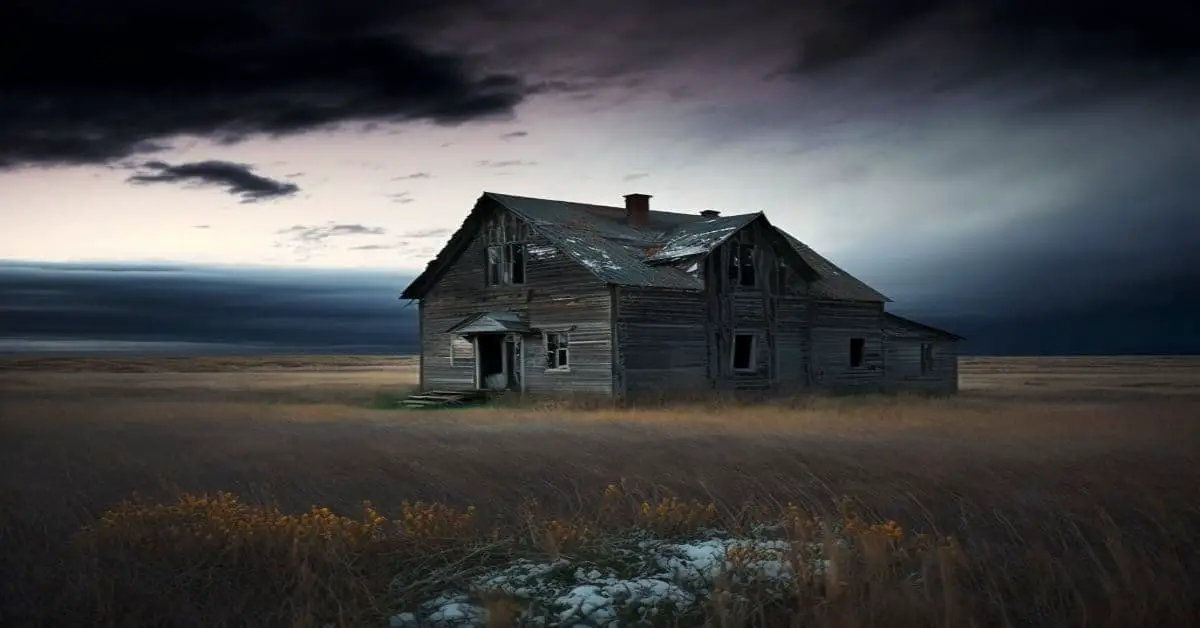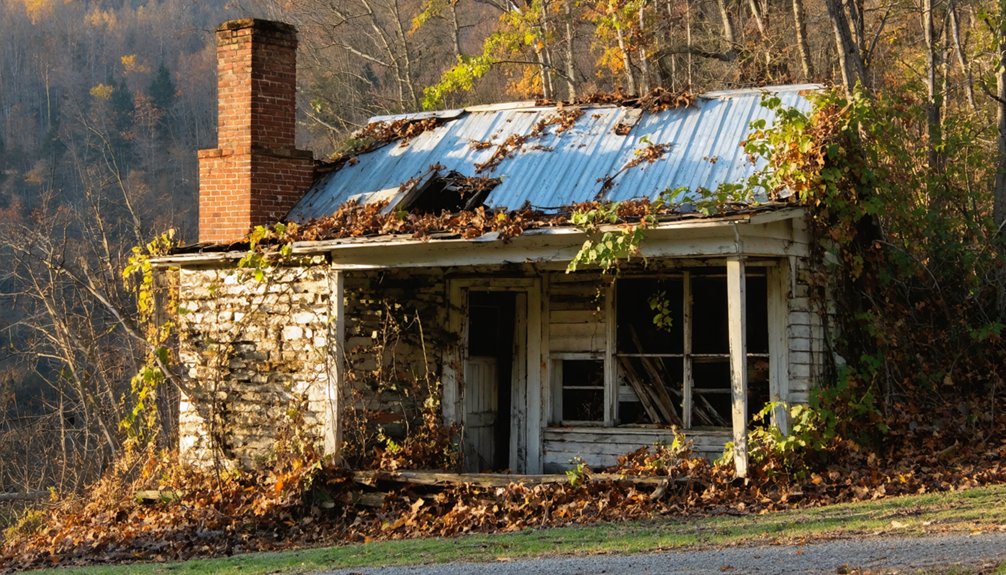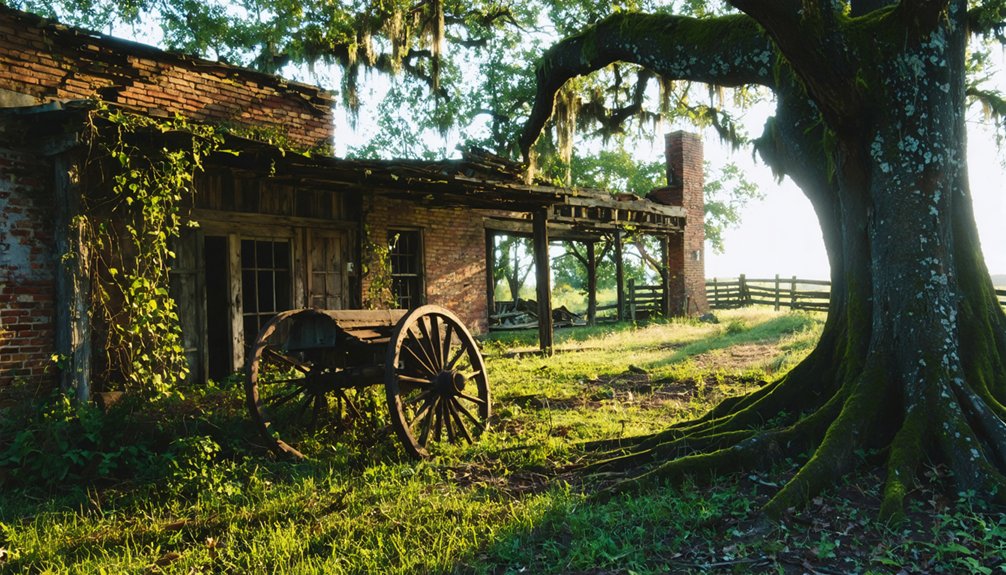You’ll find Crossroads, Arkansas beneath the waters of Lake Maumelle today, though it was once a bustling rural settlement in Hot Spring County. When reservoir construction began in the mid-20th century, about fifty families were forced to relocate, leaving behind their homes, churches, and stores. While concrete foundations and artifacts remain underwater, the community’s spirit lives on through reunions and preserved stories that reveal a deeper history of this submerged town.
Key Takeaways
- Crossroads, Arkansas was a rural settlement that now lies submerged beneath Lake Maumelle’s waters following mid-20th century reservoir construction.
- The town featured approximately fifty families, with essential services including schools, churches, and local stores before its submergence.
- Underwater archaeological evidence reveals concrete foundations and structural remnants of the former community beneath the reservoir.
- Displaced residents were forced to sell their land and relocate when the reservoir project began.
- The community’s legacy continues through relocated cemetery sites and preserved historical artifacts documenting the town’s existence.
The Submerged Legacy of a Rural Community
When the waters of a new reservoir began rising over Crossroads, Arkansas, in the mid-20th century, they didn’t just create a lake – they erased the physical traces of an entire rural community.
You’ll find evidence of this transformation through underwater archaeology, revealing concrete foundations and remnants of a once-thriving town beneath the surface.
The community’s resilience shows in the stories passed down by displaced residents who were forced to sell their land and relocate. Like Bull Shoals Lake, this flooding permanently altered the landscape and local way of life.
Similar to the devastating impact on Hopefield when Major General Hurlbert ordered its burning, residents had to quickly abandon their homes and possessions.
While roads turned into boat ramps and familiar landmarks disappeared, the town’s spirit lives on through reunions and shared memories.
Today, when water levels drop, you can glimpse ghostly reminders of Crossroads’ past: building foundations, partial structures, and other artifacts that tell the story of a community that refused to be forgotten despite being underwater.
From Settlement to Lake: The Transformation
Though Crossroads began as a modest rural settlement in Hot Spring County during the mid-19th century, its strategic location at a crucial intersection helped establish it as an important local hub.
You’ll find evidence of community resilience in its early infrastructure, which included a post office and local stores serving the agricultural needs of farming families.
The town’s historical significance gradually faded as economic opportunities shifted elsewhere.
You can trace its decline through the closure of essential services and the steady exodus of residents seeking better prospects in larger cities. Much like the historic town of Rush, where the post office closed in the 1950s, marking the beginning of its decline.
Weather and neglect took their toll on abandoned structures, while nature reclaimed former roadways.
The transformation from thriving settlement to ghost town reflects the broader story of rural Arkansas communities that couldn’t adapt to changing economic realities.
Similar to Rush, which reached its peak with 5,000 residents during the World War I zinc mining boom, these towns often thrived briefly before economic changes led to their abandonment.
Life Before the Waters Rose
Life in Crossroads during the pre-lake era centered around a close-knit community of approximately fifty families, who built their lives near the convergence of the Maumelle and Little Maumelle Rivers.
You’d have found the essential components of rural Arkansas life here: local schools where children gathered to learn, churches that anchored the community’s spiritual life, and stores where neighbors crossed paths during their daily routines.
While detailed records of community dynamics haven’t survived, you would’ve seen a self-sufficient settlement typical of the region, where families likely sustained themselves through farming and made use of the nearby waterways. The area’s earliest documented history includes James and Jacob Pyeatt as pioneering settlers who helped establish the region.
The presence of these crucial institutions, along with the community cemetery, suggests a well-established social framework where residents created a sustainable lifestyle before Lake Maumelle’s waters changed everything.
In 1956, the community faced a dramatic transformation when dam construction began, forcing residents to relocate and abandon the lives they had built.
Preserving Memories Beneath Lake Maumelle
Today, beneath Lake Maumelle‘s pristine waters, you’ll find the remains of a once-thriving community that met its end in the late 1950s.
While Crossroads’ physical structures now rest under 8,900 acres of water, its legacy lives on through historical preservation efforts and community remembrance initiatives.
Local historians have documented the town’s artifacts and stories, while relocated cemetery sites stand as tangible connections to the past.
The area was once home to Osage Native Americans who used the land as their ancestral hunting grounds.
The relocation project required fifty families to leave their homes behind.
You’ll discover that Central Arkansas Water strictly regulates the area to protect both the drinking water supply and this underwater archaeological site.
Though you can’t swim or wade in Lake Maumelle’s waters, you can fish from approved vessels near where Crossroads’ schools, churches, and stores once stood.
The lake itself serves as nature’s vault, preserving the ghostly landscape of this displaced Arkansas community.
Environmental and Social Changes in Pulaski County
While Lake Maumelle preserves Crossroads’ submerged history, modern Pulaski County faces significant environmental and social transformations.
You’ll find $53 million in EPA funding reshaping the region’s infrastructure, while initiatives like the Great Arkansas Cleanup demonstrate growing environmental awareness. The annual cleanup event runs from September through October. These changes aren’t just about conservation – they’re strengthening social resilience through job creation and economic growth. Recent deregulatory actions announced by EPA have created new considerations for waste management in the region.
You’re witnessing a pivotal shift as the county tackles environmental impact through innovative approaches. From brownfield redevelopment to endangered species protection, these efforts are transforming underutilized spaces into community assets.
Pulaski County’s innovative environmental initiatives are revolutionizing neglected areas while safeguarding wildlife, creating valuable spaces for community growth.
The focus on renewable energy, particularly solar power, signals a future where environmental consciousness and economic prosperity align. Despite challenges from extreme weather events, Pulaski County’s commitment to sustainable practices is forging a more resilient community.
Frequently Asked Questions
Are There Any Visible Remains of Crossroads During Periods of Drought?
Unlike Monte Ne’s drought-revealed ruins, you won’t find any visible evidence of Crossroads during dry spells. This ghost town’s remains aren’t hidden underwater, so drought conditions don’t expose additional structures.
What Happened to the Cemetery and Graves in Crossroads?
You’ll find the cemetery and graves submerged beneath Lake Maumelle since 1957. Despite efforts by Leslie Odd Fellows in 2007, there’s no clear evidence of grave preservation or cemetery relocation before flooding.
Did Any Original Residents Refuse to Leave Their Homes?
While you might expect stories of holdouts, there’s no evidence in historical accounts that any original residents refused to leave. Government records suggest everyone relocated when Lake Maumelle’s creation was mandated.
Are There Underwater Photography Expeditions to Document the Submerged Town?
You won’t find records of organized underwater exploration specifically documenting this submerged history. While Arkansas has active diving communities and photographers, there’s no evidence of dedicated expeditions to capture these remains.
What Compensation Did Residents Receive for Their Relocated Properties?
Like birds seeking new nests, you’d find limited records of specific relocation benefits. While nearby Arkansas towns offer modern incentives ranging $5,000-$50,000, historical resident testimonials about Crossroads compensation remain scarce.
References
- https://encyclopediaofarkansas.net/entries/ghost-legends-2651/
- https://www.arkansas.com/articles/arkansas-urban-legends
- https://www.youtube.com/watch?v=s2a3hAf5d-Y
- https://www.uaex.uada.edu/environment-nature/musings-on-nature-blog/posts/ghost-towns.aspx
- https://www.vintagebentonville.com/village-of-cross-hollows-remains-only-in-memories.html
- http://freepages.rootsweb.com/~gtusa/history/usa/ar.htm
- https://encyclopediaofarkansas.net/entries/cross-roads-hot-spring-county-11161/
- https://en.wikipedia.org/wiki/List_of_ghost_towns_in_Arkansas
- https://kids.kiddle.co/List_of_ghost_towns_in_Arkansas
- https://z94.com/lost-oklahoma-towns-underwater/



